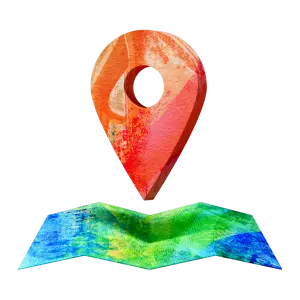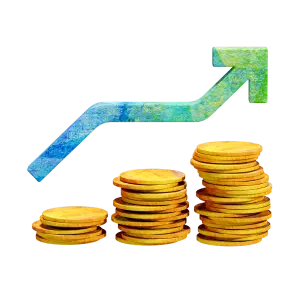บาทไทย (THB)
เงินบาทเป็นสกุลเงินของประเทศไทย โดยมีรหัสคือ THB และใช้สัญลักษณ์ ฿ เงินบาทเป็นสกุลเงินที่ถูกใช้บ่อยที่สุดเป็นอันดับที่ 10 ของโลก และเป็นหนึ่งในสกุลเงินที่แข็งแกร่งที่สุดในเอเชียตะวันออกเฉียงใต้ โดยมียูโรเป็นคู่สกุลเงินที่ได้รับความนิยมในการแลกเปลี่ยนกับเงินบาทมากที่สุด ทั้งนี้เงินบาทถือเป็นสกุลเงินทั่วไป และมีปัจจัยการแปลงที่ประกอบด้วยเลขนัยสำคัญ 6 หลัก
ชื่อสกุลเงิน
บาทไทย
สัญลักษณ์สกุลเงิน
฿
อัตราแลกเปลี่ยน THB
| USD | EUR | CAD | AUD | GBP | INR | ZAR | SGD | |
|---|---|---|---|---|---|---|---|---|
| จาก THB | 0.02913 | 0.02793 | 0.04186 | 0.04659 | 0.02317 | 2.47432 | 0.53321 | 0.03947 |
| เป็น THB | 34.33150 | 35.80430 | 23.88780 | 21.46230 | 43.15470 | 0.40415 | 1.87544 | 25.33600 |
ระวังอัตราแลกเปลี่ยนราคาแพงธนาคารและผู้ให้บริการแบบดั้งเดิมมักจะมีค่าใช้จ่ายเพิ่มเติม ซึ่งพวกเขามักจะนำมาคิดเงินคุณด้วยการเพิ่มอัตราแลกเปลี่ยน เทคโนโลยีอันชาญฉลาดของเราจะช่วยให้เรามีประสิทธิภาพมากขึ้น ซึ่งยังช่วยให้คุณได้รับอัตราแลกเปลี่ยนที่ยอดเยี่ยมในทุกครั้งอีกด้วย
| ชื่อ | บาทไทย (THB) |
|---|---|
| สัญลักษณ์ | ฿ |
| หน่วยย่อย | สตางค์ |
| สัญลักษณ์หน่วยย่อย | สตางค์ |
| ธนบัตรที่นิยมใช้ | ฿20, ฿50, ฿100, ฿500, ฿1000 |
| เหรียญที่นิยมใช้ | ฿1, ฿2, ฿5, ฿10 |
| ธนาคารกลาง | ธนาคารแห่งประเทศไทย Bank of Thailand |
| ผู้ใช้ | ไทย, ลาว, กัมพูชา, เมียนมาร์ |
ตารางข้อเท็จจริงเกี่ยวกับเงินสกุลบาทไทย (THB)
การพัฒนาสกุลเงินในประเทศไทยย้อนกลับไปตั้งแต่สมัยรัตนโกสินทร์ โดยมีการออกเหรียญและธนบัตรที่ผลิตจากโรงงานอย่างเป็นทางการเป็นครั้งแรก ธนบัตรกระดาษได้เปิดตัวครั้งแรกในปี 1853 (พ.ศ. 2396) ผ่านตั๋วสัญญาใช้เงินของราชวงศ์ ตามมาด้วยธนบัตรจากธนาคารต่างประเทศ ต่อมาในปี 1857 (พ.ศ. 2400) ประเทศไทยได้รับเครื่องจักรการผลิตเหรียญเครื่องแรก ซึ่งทำให้เริ่มมีการผลิตเหรียญเงินไทย และการปรับปรุงระบบการผลิตเหรียญเกิดขึ้นในปี 1897 (พ.ศ. 2440) โดยย่อสกุลเงินจาก 11 หน่วย เหลือเพียงสองหน่วย คือ สตางค์และบาท ภายใต้ระบบมาตรฐานเงินทศนิยม
สกุลเงินบาทและสกุลเงินต่างประเทศ
ในช่วงแรก บาทไทยถูกผูกติดกับปอนด์อังกฤษ (British Pound) ที่อัตราคงที่ 8 THB เป็น 1 GBP จนถึงปี 1880 (พ.ศ. 2423) จากนั้นอัตรานี้ได้มีการปรับเปลี่ยนหลายครั้ง โดยผูกติดกับเงินเยนของญี่ปุ่นที่มูลค่าเท่ากันในช่วงสงครามโลกครั้งที่สอง หลังสงครามโลก ได้มีการผูกติดกับดอลลาร์สหรัฐที่อัตรา 20.8 บาท ต่อ 1 ดอลลาร์สหรัฐ และเปลี่ยนเป็น 20 บาท ต่อ 1 ดอลลาร์สหรัฐในปี 1978 (พ.ศ. 2521) และต่อมาเป็น 25 บาทในปี 1984 (พ.ศ. 2527)
ในปี 1997 (พ.ศ. 2540) ประเทศไทยประสบวิกฤตทางการเงิน ทำให้ค่าเงินบาทลดลงถึง 50% และจำเป็นต้องนำระบบอัตราแลกเปลี่ยนแบบลอยตัวมาใช้ โดยหลังจากเหตุการณ์เศรษฐกิจล่มนี้ค่าเงินบาทไทยก็มีเสถียรภาพในที่สุด

ประวัติศาสตร์สมัยใหม่ของเงินบาท
แม้ว่าบาทไทยจะถูกใช้อย่างเป็นทางการเฉพาะในประเทศไทย แต่ก็มีการใช้อย่างไม่เป็นทางการในประเทศลาว กัมพูชา และเมียนมาร์
เมื่อวันที่ 19 ธันวาคม 2006 (พ.ศ. 2549) ธนาคารแห่งประเทศไทยได้ใช้มาตรการควบคุมอัตราแลกเปลี่ยน ส่งผลให้เกิดความแตกต่างอย่างมากระหว่างอัตราแลกเปลี่ยนนอกประเทศและในประเทศ ซึ่งทำให้เกิดส่วนต่างสูงถึง 10 เปอร์เซ็นต์ระหว่างตลาดเหล่านี้ อย่างไรก็ตาม มาตรการควบคุมเหล่านี้ถูกยกเลิกเป็นส่วนใหญ่ในวันที่ 3 มีนาคม 2008 (พ.ศ. 2551) ทำให้ความแตกต่างอย่างมีนัยสำคัญระหว่างอัตราแลกเปลี่ยนนอกประเทศและในประเทศนี้หายไป